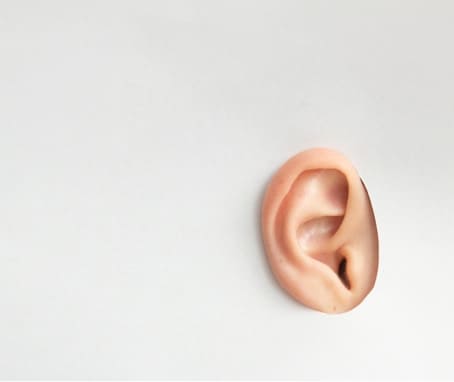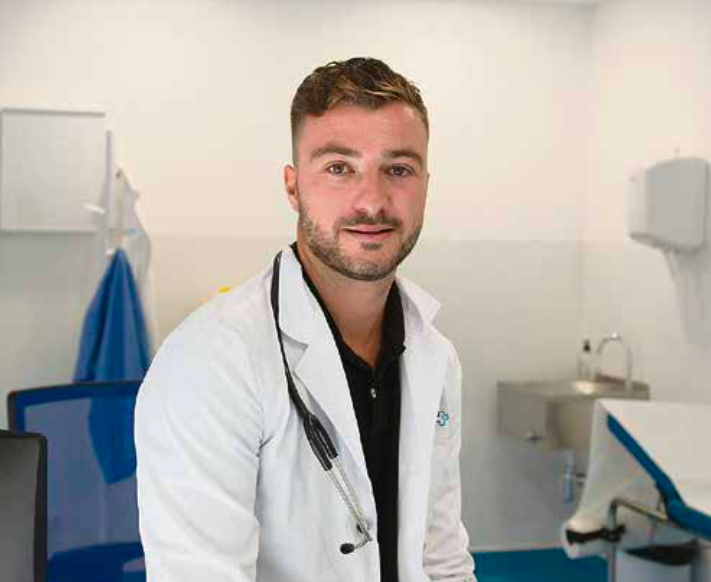

AMOXICILLIN SANDOZ 250 mg/5 ml ORAL SUSPENSION POWDER

Ask a doctor about a prescription for AMOXICILLIN SANDOZ 250 mg/5 ml ORAL SUSPENSION POWDER

How to use AMOXICILLIN SANDOZ 250 mg/5 ml ORAL SUSPENSION POWDER
Introduction
Patient Information Leaflet
Amoxicillin Sandoz Pharmaceutical 250 mg/5 ml Powder for Oral Suspension EFG
amoxicillin
Read the entire leaflet carefully before starting to take this medication, as it contains important information for you.
- Keep this leaflet, as you may need to read it again.
- If you have any questions, consult your doctor or pharmacist.
- This medication has been prescribed to you only, and you should not give it to others, even if they have the same symptoms as you, as it may harm them.
- If you experience side effects, consult your doctor or pharmacist, even if they are side effects not listed in this leaflet. See section 4.
Contents of the Leaflet
- What Amoxicillin Sandoz Pharmaceutical is and what it is used for
- What you need to know before taking Amoxicillin Sandoz Pharmaceutical
- How to take Amoxicillin Sandoz Pharmaceutical
- Possible side effects
- Storage of Amoxicillin Sandoz Pharmaceutical
- Package contents and additional information
1. What Amoxicillin Sandoz Pharmaceutical is and what it is used for
What Amoxicillin Sandoz Pharmaceutical is
Amoxicillin Sandoz Pharmaceutical is an antibiotic. The active ingredient is amoxicillin. This belongs to a group of medicines called "penicillins".
Antibiotics are used to treat bacterial infections and are not effective against viral infections such as the flu or the common cold.
It is essential to follow the instructions regarding dosage, administration, and treatment duration indicated by your doctor.
Do not store or reuse this medication. If you have any leftover antibiotic after completing treatment, return it to the pharmacy for proper disposal. Do not dispose of medications down the drain or in the trash.
What Amoxicillin Sandoz Pharmaceutical is used for
Amoxicillin is used to treat infections caused by bacteria in different parts of the body. Amoxicillin can also be used in combination with other medications to treat stomach ulcers.
2. What you need to know before taking Amoxicillin Sandoz Pharmaceutical
Do not take Amoxicillin Sandoz Pharmaceutical
- if you are allergic to amoxicillin, penicillin, or any of the other components of this medication (listed in section 6),
- if you have ever had an allergic reaction to any other antibiotic. This could include a skin rash or swelling of the face or throat.
Do not take amoxicillin if any of the above points apply to you. If you are unsure, consult your doctor or pharmacist before taking amoxicillin.
Warnings and precautions
Consult your doctor before starting to take amoxicillin if:
- you have infectious mononucleosis (fever, sore throat, swollen glands, and extreme fatigue),
- you have kidney problems,
- you do not urinate regularly.
If you are unsure whether any of the above situations apply to you, inform your doctor or pharmacist before taking amoxicillin.
Blood and urine tests
If you are undergoing:
- urine tests (glucose in urine) or blood tests for liver function,
- estriol tests (used during pregnancy to check if the baby is developing normally).
Inform your doctor or pharmacist that you are taking amoxicillin. This is because amoxicillin can alter the results of these types of tests.
Other medications and Amoxicillin Sandoz Pharmaceutical
Inform your doctor or pharmacist if you are taking, have recently taken, or may need to take any other medication.
Pregnancy, breastfeeding, and fertility
If you are pregnant or breastfeeding, think you may be pregnant, or plan to become pregnant, consult your doctor or pharmacist before using this medication.
Driving and using machines
Amoxicillin may have side effects, and symptoms (such as allergic reactions, dizziness, and convulsions) may make you unfit to drive.
Do not drive or operate machinery unless you feel well.
Amoxicillin Sandoz Pharmaceutical contains aspartame, sodium benzoate, benzyl alcohol, benzyl benzoate, sorbitol, glucose, and sulfur dioxide.
- This medication contains 8.5 mg of aspartame (E951) per dose. Aspartame contains a source of phenylalanine that may be harmful in cases of phenylketonuria (PKU), a rare genetic disorder in which phenylalanine accumulates due to the body's inability to eliminate it properly.
- This medication contains 7.1 mg of sodium benzoate (E211), which is a mild irritant to the eyes, skin, and mucous membranes. This medication contains up to 0.44 mg of benzyl benzoate per dose. Benzyl benzoate and sodium benzoate may increase the risk of jaundice (yellowing of the skin and eyes) in newborns (up to 4 weeks of age).
- This medication contains up to 3 mg of benzyl alcohol per dose. Benzyl alcohol may cause allergic reactions.
Benzyl alcohol has been associated with the risk of serious adverse effects, including respiratory problems ("gasping syndrome") in children. Do not administer this medication to your newborn (up to 4 weeks of age) unless your doctor has recommended it.
Consult your doctor or pharmacist if you are pregnant or breastfeeding. This is because benzyl alcohol can accumulate in your body and cause adverse effects (metabolic acidosis).
This product should not be used for more than one week in children under 3 years of age unless indicated by your doctor or pharmacist.
Consult your doctor or pharmacist if you have liver or kidney disease. This is because benzyl alcohol can accumulate in the body and cause adverse effects (metabolic acidosis).
- This medication contains less than 1 mmol of sodium (23 mg) per tablet; it is essentially "sodium-free".
- This medication contains 0.14 mg of sorbitol per dose.
- This medication contains 0.1 micrograms of sulfur dioxide. It can rarely cause severe hypersensitivity reactions and bronchospasm.
- This medication contains 0.68 mg of glucose. If your doctor has told you that you have an intolerance to certain sugars, consult with them before taking this medication.
3. How to take Amoxicillin Sandoz Pharmaceutical
Follow the administration instructions for this medication exactly as indicated by your doctor or pharmacist. If in doubt, consult your doctor or pharmacist again.
- Shake the bottle well before each administration.
- Space out the administrations evenly throughout the day, at least 4 hours apart.
The recommended dose is:
Children under 40 kg of weight
All doses are based on the child's body weight in kilograms.
- Your doctor will indicate how much amoxicillin to administer to your baby or child.
- The recommended dose is 40 mg to 90 mg per kilogram of body weight per day, administered in two or three divided doses.
- The maximum recommended dose is 100 mg per kilogram of body weight per day.
Adults, elderly, and children over 40 kg of weight
The recommended dose of amoxicillin is 250 mg to 500 mg three times a day or 750 mg to 1 g every 12 hours, depending on the severity and type of infection.
- Severe infections: 750 mg to 1 g three times a day.
- Urinary tract infections: 3 g twice a day for one day.
- Lyme disease (infection transmitted by parasites called ticks): Erythema migrans alone (initial phase - circular red or pink rash): 4 g per day, Systemic manifestations (late phase - for more severe symptoms or when the disease spreads throughout the body): up to 6 g per day.
- Stomach ulcers: a dose of 750 mg or 1 g twice a day for 7 days with other antibiotics and medications to treat stomach ulcers.
- To prevent heart infection during surgery: the dose will vary depending on the type of surgery. Other medications may also be administered at the same time. Your doctor, pharmacist, or nurse can provide more details.
- The maximum recommended dose is 6 g per day.
Kidney problems
If you have kidney problems, the dose may be lower than the usual dose.
If you take more Amoxicillin Sandoz Pharmaceutical than you should
If you have taken more amoxicillin than you should, the signs may be stomach upset (feeling unwell, nausea, or diarrhea) or crystals in the urine, which can appear as cloudy urine, or problems urinating. Talk to your doctor as soon as possible. Bring the medication with you to show it to them.
In case of overdose or accidental ingestion, consult your doctor or pharmacist immediately or call the Toxicology Information Service, phone: 91 562 04 20, indicating the medication and the amount ingested.
If you forget to take Amoxicillin Sandoz Pharmaceutical
- If you forget to take a dose, take it as soon as you remember.
- Do not take the next dose too soon, wait at least 4 hours before taking the next dose.
- Do not take a double dose to make up for missed doses.
How long to take Amoxicillin Sandoz Pharmaceutical
- Continue taking amoxicillin for the time your doctor has indicated, even if you feel better. You need to take all the doses to overcome the infection. If some bacteria survive, they can cause the infection to recur.
- Once you finish the treatment, if you still feel unwell, you should see your doctor again.
Thrush (a fungal infection of the moist parts of the body that can cause pain, itching, and white discharge) may appear if you take amoxicillin for a long time. If this happens, consult your doctor.
If you take amoxicillin for a long time, your doctor may perform additional tests to check that your kidneys, liver, and blood are functioning normally.
The reconstitution of the suspension is carried out by the doctor or pharmacist.
To reconstitute the suspension, fill the bottle with fresh tap water to about 1 cm below the fill mark, close, and shake well immediately.
Once the foam has settled, slowly add tap water exactly up to the fill mark (55 ml of water for 60 ml, 92 ml of water for 100 ml of suspension).
Shake vigorously again. The suspension, white to slightly yellowish in color and with a fruity odor, is ready for use.
Shake the bottle well before taking each dose.
If you have any further questions about the use of this medication, ask your doctor or pharmacist.
4. Possible side effects
Like all medications, this medication can cause side effects, although not everyone will experience them.
Stop taking amoxicillin and see a doctor immediately if you experience any of the following serious side effects - you may need urgent medical treatment:
The following side effects are very rare (may affect up to 1 in 10,000 people)
- allergic reactions, the signs can include: itching of the skin or rash, swelling of the face, lips, tongue, body, or difficulty breathing. These can be severe and, in some cases, have been fatal,
- skin rash or flat red spots like the tip of a pin under the skin surface or bruising of the skin. This is due to inflammation of the blood vessel walls due to an allergic reaction. It can be associated with joint pain (arthritis) and kidney problems,
- a delayed allergic reaction may appear 7 to 12 days after taking amoxicillin, some signs include: rashes, fever, joint pain, and swelling of the lymph nodes, especially under the arms,
- a skin reaction called "erythema multiforme" in which you may develop: purple or reddish rashes with itching on the skin, especially on the palms of the hands or soles of the feet, swollen areas with a blister-like appearance on the skin, soft tissues on the surface of the mouth, eyes, or genitals. You may have a fever and feel very tired,
- other severe skin reactions can be: changes in skin color, lumps under the skin, blisters, pustules, peeling, redness, pain, itching, exfoliation. They can be accompanied by fever, headache, and body pain,
- flu-like symptoms with skin rash, fever, gland inflammation, and abnormal blood test results (such as increased white blood cells (eosinophilia) and elevated liver enzymes) (drug reaction with eosinophilia and systemic symptoms (DRESS)), fever, chills, sore throat, or other signs of infection, or easy bruising. These can be signs of a problem with your blood cells,
- Jarisch-Herxheimer reaction that occurs during treatment with amoxicillin for Lyme disease and causes fever, chills, headache, and muscle pain, and skin rash,
- inflammation of the large intestine (colon) with diarrhea (sometimes with blood), pain, and fever,
- serious liver effects can occur. These are mainly associated with prolonged treatments, men, and the elderly. You should inform your doctor immediately if you have:
- severe diarrhea with bleeding,
- blisters, redness, or bruising of the skin,
- dark urine or pale stools,
- yellowing of the skin and the whites of the eyes (jaundice). See also anemia below, which can lead to jaundice.
These can occur during treatment or up to several weeks after.
If any of the above symptoms appear, stop taking the medication and see a doctor immediately.
Sometimes you may experience less severe skin reactions such as:
- a moderate rash with itching (round, pink-red patches), swollen areas with a blister-like appearance on the skin, especially on the forearms, legs, palms, hands, or feet. This is uncommon (may affect up to 1 in 100 people).
If you experience any of these, talk to your doctor, as you will need to interrupt your treatment with amoxicillin
Other possible side effects are:
Frequent(may affect up to 1 in 10 people)
- skin rash,
- nausea,
- diarrhea.
Uncommon(may affect up to 1 in 100 people)
- vomiting.
Very rare(may affect up to 1 in 10,000 people)
- thrush (fungal infection in the vagina, mouth, or skin folds), you can get treatment for thrush from your doctor or pharmacist,
- kidney problems,
- seizures (convulsions), observed in patients treated with high doses or with kidney problems,
- dizziness,
- hyperactivity,
- discoloration of the teeth, which usually disappears with brushing (this has been reported in children),
- the tongue may change color to yellow, brown, or black and may have a hairy appearance,
- a excessive breakdown of red blood cells that causes a type of anemia. The signs include: fatigue, headache, difficulty breathing, dizziness, paleness, and yellowing of the skin and the whites of the eyes,
- low white blood cell count,
- low number of cells involved in blood clotting,
- blood may take longer than usual to clot. You may notice this if you have a nosebleed or cut yourself.
Frequency not known(cannot be estimated from available data)
- chest pain in the context of allergic reactions, which can be a symptom of allergy-induced heart attack (Kounis syndrome),
- drug-induced enterocolitis syndrome (DIES):
DIES has been reported mainly in children receiving amoxicillin. It is a certain type of allergic reaction with the main symptom of repeated vomiting (1 to 4 hours after medication administration). Other symptoms may include abdominal pain, lethargy, diarrhea, and low blood pressure,
- crystals in the urine that cause acute kidney injury,
- a skin rash with blisters arranged in a circle with a central crust or like a necklace (linear IgA disease),
- inflammation of the membranes surrounding the brain and spinal cord (aseptic meningitis).
Reporting side effects
If you experience any side effects, consult your doctor or pharmacist, even if they are side effects not listed in this leaflet. You can also report them directly through the Spanish Pharmacovigilance System for Human Use Medicines: https://www.notificaram.es. By reporting side effects, you can contribute to providing more information on the safety of this medication.
5. Storage of Amoxicilina Sandoz Pharmaceutical
Keep this medicine out of the sight and reach of children.
Do not use this medicine after the expiry date stated on the packaging and blister after CAD/EXP. The expiry date is the last day of the month indicated.
Do not store above 25°C. Keep the container perfectly closed to protect it from moisture.
Storage conditions after reconstitution:
Store in the refrigerator (between 2°C and 8°C)
Validity period after reconstitution:
14 days
Do not use this medicine if you see powder lumps in the bottle before reconstitution.
Medicines should not be disposed of via wastewater or household waste. Deposit the packaging and any unused medicines at the pharmacy's SIGRE point. If in doubt, ask your pharmacist how to dispose of the packaging and unused medicines. This will help protect the environment.
6. Package contents and additional information
Composition ofAmoxicilina Sandoz Pharmaceutical
The active ingredient is amoxicillin (as amoxicillin trihydrate).
5 ml of reconstituted suspension contain:
Amoxicillin trihydrate equivalent to 250 mg of amoxicillin.
The other excipients are anhydrous citric acid (E330), sodium benzoate (E211), aspartame (E951),
talc (E553b), anhydrous trisodium citrate (E331), guar gum (E412), precipitated silicon dioxide (E551), lemon powder flavor (containing, among others, sorbitol, sulfur dioxide, glucose), peach and apricot powder flavor (containing, among others, sorbitol, sulfur dioxide, benzyl benzoate), and orange powder flavor (containing, among others, benzyl alcohol).
Appearance of the product and package contents
Powder between white and slightly yellowish with a characteristic fruity odor.
Ambber glass bottles containing 6.6 g of powder for 60 ml of oral suspension and 11 g of powder for 100 ml of oral suspension, with a polypropylene screw cap (pressure + twist) and a sealing membrane.
The dosing spoon packaged with filling marks at 1.25 ml, 2.5 ml, and 5.0 ml is made of polypropylene.
Individual packages of 60 ml and 100 ml in a cardboard box
Clinical packages of 10x60 ml, 20x60 ml, 40x60 ml, 10x100 ml, and 40x100 ml in a cardboard box.
Only some package sizes may be marketed.
Marketing authorization holder and manufacturer
Marketing authorization holder
Sandoz Farmacéutica, S.A.
Centro Empresarial Parque Norte
Edificio Roble
C/ Serrano Galvache, 56
28033 Madrid
Spain
Manufacturer
Sandoz GmbH
Biochemiestrasse, 10
6250 -Kundl
Austria
This medicine is authorized in the member states of the European Economic Area and in the United Kingdom (Northern Ireland) under the following names:
Austria: Ospamox 250 mg/5 ml - Pulver für orale Suspension
Belgium: Amoxicilline Sandoz 250mg/5ml poeder voor orale suspensie
Netherlands: Amoxicilline Sandoz Forte 250 mg/5 ml, poeder voor orale suspensie
Portugal: AMOXICILINA SANDOZ 250 MG/5 ML PÓ PARA SUSPENSÃO ORAL
United Kingdom
(Northern Ireland) : Amoxicillin 250 mg/5 ml Suspension
Date of the last revision of this prospectus:01/2024.
Detailed information about this medicine is available on the website of the Spanish Agency for Medicines and Health Products (AEMPS) http://www.aemps.gob.es.
General advice regarding the use of antibiotics Antibiotics are used to treat bacterial infections. They are not effective against viral infections. Sometimes a bacterial infection does not respond to antibiotic treatment. One of the most common reasons for this is that the bacteria causing the infection are resistant to the antibiotic being taken. This means that the bacteria can survive or grow despite the antibiotic. Bacteria can become resistant to antibiotics for many reasons. Using antibiotics properly can reduce the chances of bacteria becoming resistant to them. When your doctor prescribes an antibiotic, it is only to treat your current illness. Paying attention to the following advice will help prevent the emergence of resistant bacteria that can make the antibiotic ineffective:
|
Reconstitution instructions
Reconstitution of the suspension is performed by the doctor or pharmacist.
Once the screw cap is opened, ensure that the cap's seal is intact and well-adhered to the bottle's edge. Do not use if it is not intact. Shake the bottle to loosen the powder. To reconstitute the suspension, fill the bottle with fresh tap water approximately 1 cm below the fill mark, close, and shake well immediately.
Once the foam has settled, slowly add tap water exactly up to the fill mark (55 ml of water for 60 ml, 92 ml of water for 100 ml of suspension).
Shake vigorously again.
The suspension, which is white to slightly yellowish in color and has a fruity odor, is ready for use.
Do not use the reconstituted suspension if the color is not between white and slightly yellowish.
Shake the bottle well before taking each dose.

How much does AMOXICILLIN SANDOZ 250 mg/5 ml ORAL SUSPENSION POWDER cost in Spain ( 2025)?
The average price of AMOXICILLIN SANDOZ 250 mg/5 ml ORAL SUSPENSION POWDER in December, 2025 is around 2.69 EUR. Prices may vary depending on the region, pharmacy, and whether a prescription is required. Always check with a local pharmacy or online source for the most accurate information.
- Country of registration
- Average pharmacy price2.69 EUR
- Active substance
- Prescription requiredYes
- Manufacturer
- This information is for reference only and does not constitute medical advice. Always consult a licensed doctor before taking any medication. Oladoctor is not responsible for medical decisions based on this content.
- Alternatives to AMOXICILLIN SANDOZ 250 mg/5 ml ORAL SUSPENSION POWDERDosage form: INJECTABLE, -Active substance: amoxicillinManufacturer: Ldp Laboratorios Torlan S.A.Prescription requiredDosage form: CAPSULE, 500 mgActive substance: amoxicillinManufacturer: Ldp Laboratorios Torlan S.A.Prescription requiredDosage form: TABLET, 1000 mgActive substance: amoxicillinManufacturer: Almus Farmaceutica S.A.U.Prescription required
Alternatives to AMOXICILLIN SANDOZ 250 mg/5 ml ORAL SUSPENSION POWDER in other countries
The best alternatives with the same active ingredient and therapeutic effect.
Alternative to AMOXICILLIN SANDOZ 250 mg/5 ml ORAL SUSPENSION POWDER in Poland
Alternative to AMOXICILLIN SANDOZ 250 mg/5 ml ORAL SUSPENSION POWDER in Ukraine
Online doctors for AMOXICILLIN SANDOZ 250 mg/5 ml ORAL SUSPENSION POWDER
Discuss dosage, side effects, interactions, contraindications, and prescription renewal for AMOXICILLIN SANDOZ 250 mg/5 ml ORAL SUSPENSION POWDER – subject to medical assessment and local rules.















